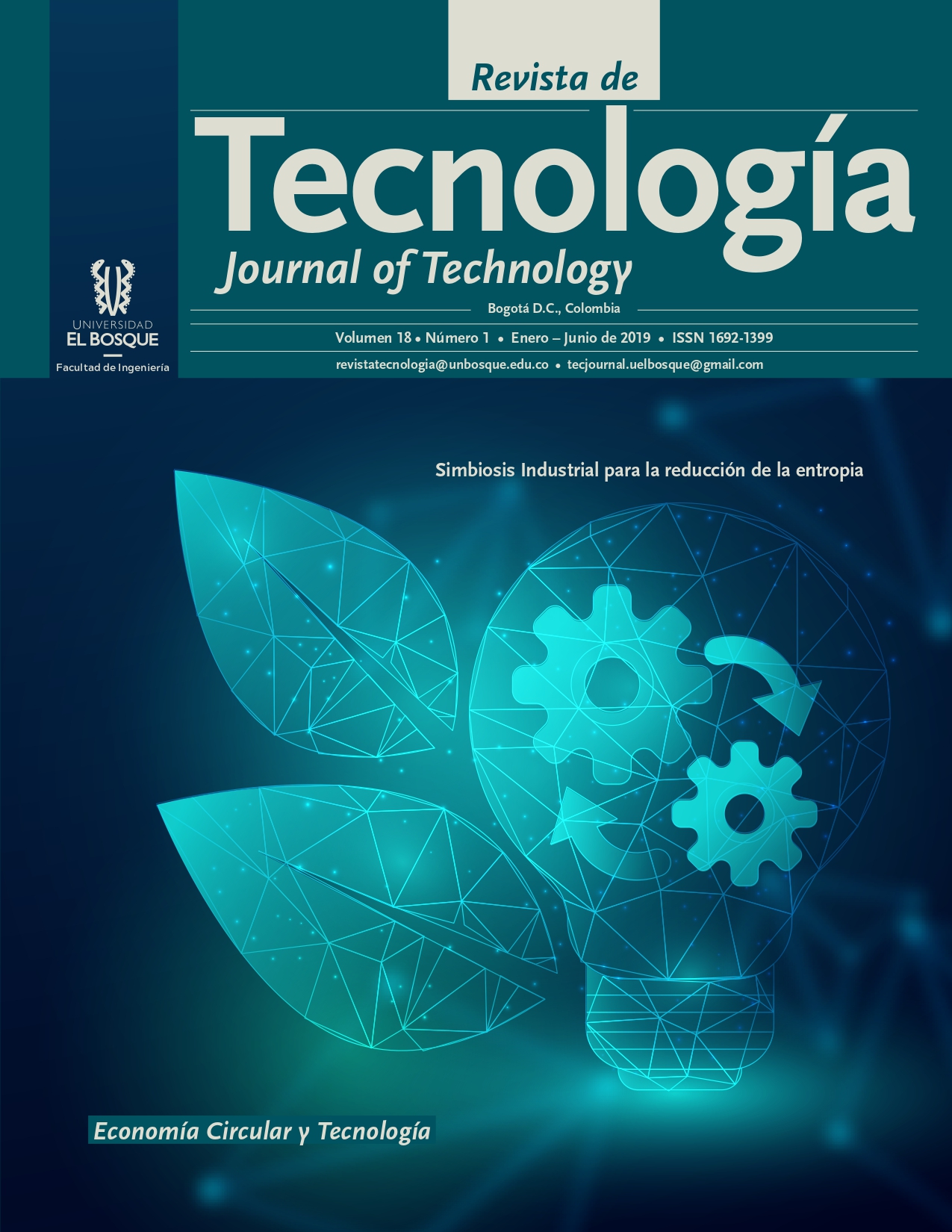Remediation of mercury-contaminated sediments through the use of l-cysteine.
Keywords:
Mercury, sediments, L-Cysteine, nonmobile mercury, remediation.Abstract
Mercury is a toxic heavy metal that has the ability to bioaccumulate and biomagnify when released into the environment; Due to its misuse in Colombia, currently this pollutant threatens entire ecosystems and represents a public health problem for various regions of the country. As an alternative solution, a chelating agent was used to stimulate the conversion of mobile-toxic mercury to non-mobile species, for which the South River, located in Waynesboro, VA, USA is used as a sediment model; the samples were subjected to a remediation process using L-Cysteine, an amino acid known to be a chelating agent for heavy metals through its thiol group; Additionally, a commercial solution called “MERCON X” typically used as a decontaminant and suppressor of mercury vapors was utilized in another sediment sample. After the remediation process, the increase in non-mobile mercury species was observed in the sample treated with L-Cysteine, which makes the amino acid a possible low-cost alternative for the remediation of sediments contaminated with mercury.
Downloads
References
Bansal, M., Ram, B., Chauhan, G. S., & Kaushik, A. (2018). L-Cysteine functionalized bagasse cellulose nanofibers for mercury(II) ions adsorption. International Journal of Biological Macromolecules, 112, 728–736. https://doi.org/10.1016/j. ijbiomac.2018.01.206
Barone, J. R., Dangaran, K., & Schmidt, W. F. (2006). Blends of cysteine-containing proteins. Journal of Agricultural and Food Chemistry, 54(15), 5393– 5399. https://doi.org/10.1021/jf053238l
Chang, L. W., & Tjalkens, R. B. (2010). Neurotoxicology of Metals. In Comprehensive Toxicology, Second Edition ( Vol. 13, pp. 483–497). Elsevier Inc. https://doi.org/10.1016/B978-0-08-046884- 6.01329-4
Environmental Protection Agency. (2007). METHOD 7471B. https://www.epa.gov/sites/production/ files/2015-12/documents/7471b.pdf
Environmental Protection Agency, U. (1994). EPA Method 7470A (SW-846): Mercury in Liquid Wastes (Manual Cold-Vapor Technique). https://www.epa. gov/sites/production/files/2015-07/documents/ epa-7470a.pdf
Fernández-Martínez, R., Loredo, J., Ordóñez, A., & Rucandio, M. I. (2006). Physicochemical characterization and mercury speciation of particle-size soil fractions from an abandoned mining area in Mieres, Asturias (Spain). Environmental Pollution, 142, 217–226. https://doi.org/10.1016/j. envpol.2005.10.034
Gong, Y., Huang, · Yao, Wang, · Mengxia, Liu, F., & Zhang, · Tong. (2019). Application of Iron-Based Materials for Remediation of Mercury in Water and Soil. Bulletin of Environmental Contamination and Toxicology, 102, 721–729. https://doi. org/10.1007/s00128-019-02559-4
Gorder, G. (2019, December 20). Contaminación con mercurio de minería ilegal afecta a indígenas de Colombia. https://es.insightcrime.org/noticias/ noticias-del-dia/contaminacion-con-mercurio-demineria-ilegal-afecta-a-indigenas-de-colombia/
Han, Y., Kingston, H. M., Boylan, H. M., Rahman, G. M. M., Shah, S., Richter, R. C., Link, D. D., & Bhandari, S. (2003). Speciation of mercury in soil and sediment by selective solvent and acid extraction. Analytical and Bioanalytical Chemistry, 375(3), 428–436. https://doi.org/10.1007/s00216-002- 1701-4
Issaro, N., Abi-Ghanem, C., & Bermond, A. (2009). Fractionation studies of mercury in soils and sediments: A review of the chemical reagents used for mercury extraction. Analytica Chimica Acta, 631, 1–12. https://doi.org/10.1016/j.aca.2008.10.020
Jagtap, R. (2011). Measurement of methyl mercury (I) and mercury (II) in fish tissues and sediments by HPLC-ICPMS and HPLC-HGMS (pp. 49–55).
Jagtap, R., Krikowa, F., Maher, W., Foster, S., & Ellwood, M. (2011). Measurement of methyl mercury (I) and mercury (II) in fish tissues and sediments by HPLC-ICPMS and HPLC-HGAAS. Talanta, 85(1), 49–55. https://doi.org/10.1016/j. talanta.2011.03.022
Joshi, D., Mittal, D. K., Shukla, S., Srivastav, A. K., & Srivastav, S. K. (2014). N-acetyl cysteine and selenium protects mercuric chloride-induced oxidative stress and antioxidant defense system in liver and kidney of rats: A histopathological approach. Journal of Trace Elements in Medicine and Biology, 28(2), 218–226. https://doi.org/10.1016/j. jtemb.2013.12.006
Long, E. R., Macdonald, D. D., Smith, S. L., & Calder, F. D. (1995). Incidence of adverse biological effects within ranges of chemical concentrations in marine and estuarine sediments. Environmental Management, 19(1), 81–97. https://doi.org/10.1007/ BF02472006
Matlock, M. M., Henke, K. R., & Atwood, D. A. (2002). Effectiveness of commercial reagents for heavy metal removal from water with new insights for future chelate designs. Journal of Hazardous Materials, 92(2), 129–142. https://doi.org/10.1016/ S0304-3894(01)00389-2
Matlock, M. M., Howerton, B. S., Aelstyn, M. Van, Henke, K. R., & Atwood, D. A. (2003). Soft metal preferences of 1,3-benzenediamidoethanethiol. Water Research, 37(3), 579–584. https://doi. org/10.1016/S0043-1354(02)00279-8
MINSALUD, & Instituto Nacional de Salud. (2018). EVALUACION DEL GRADO DE CONTAMINACIÓN POR MERCURIO Y OTRAS SUSTANCIAS TÓXICAS, Y SU AFECTACIÓN EN LA SALUD HUMANA EN LAS POBLACIONES DE LA CUENCA DEL RIO ATRATO, COMO CONSECUENCIA DE LAS ACTIVIDADES DE MINERÍA. https://www.minsalud.gov.co/sites/rid/ Lists/BibliotecaDigital/RIDE/VS/PP/SA/protocolosentencia-t622-vcolciencias.pdf
Montoya Chica, D., & Escallón Wey, C. (2017, August 16). Colombia aún no hace parte del Convenio de Minamata que busca eliminar el mercurio | WWF. WWF. https://www.wwf.org.co/?308690/Colombiaaun-no-hace-parte-del-Convenio-Minamata
Nriagu, J. O. (1979). Global inventory of natural and anthropogenic emissions of trace metals to the atmosphere . In Nature ( Vol. 279, Issue 5712, pp. 409–411). Nature Publishing Group. https://doi. org/10.1038/279409a0
Ohio Lumex. (2020). Portable Mercury Vapor Analyzer RA-915M | USA | Ohio Lumex. https:// www.ohiolumex.com/mercury-vapor-analyzer915m
Randall, P. M., & Chattopadhyay, S. (2013). Mercury contaminated sediment sites-An evaluation of remedial options. Environmental Research, 125, 131–149. https://doi.org/10.1016/j. envres.2013.01.007
South River Science Team. (2001). Who We Are | South River Science Team | Waynesboro, VA. https://southriverscienceteam.org/who-weare/#historic-timeline
Downloads
Published
Issue
Section
License

This work is licensed under a Creative Commons Attribution 4.0 International License.
Although all advertising and further contents are expected to conform to ethical standards, inclusion in this publication does not constitute a guarantee or endorsement of the quality or value of such a product or the claims made of it by its manufacturer. No responsibility is assumed by the publisher for any injury and/or damage to people or property as a matter of product liability, negligence or otherwise, or form, any use or operation of any methods, products, instructions or ideas contained in the material herein.

